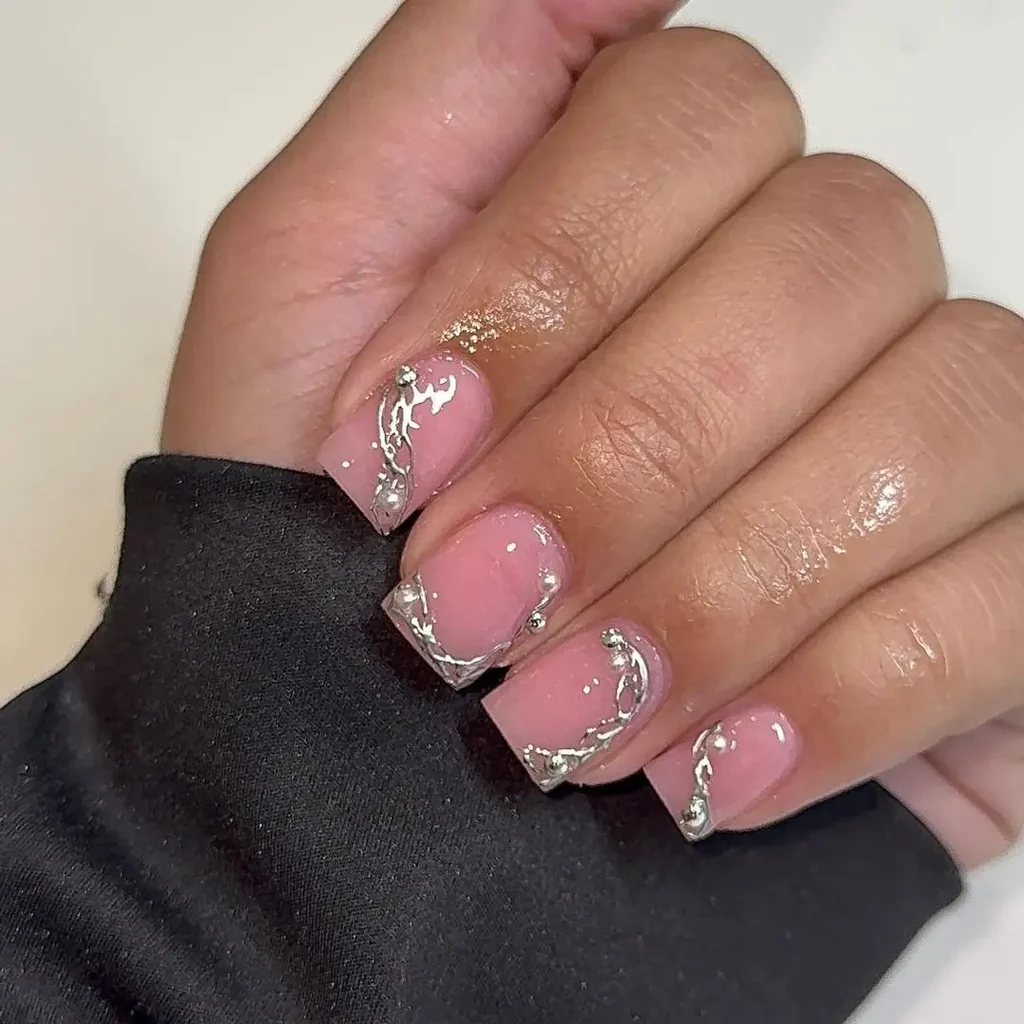
Liquid Nails Drying Time: Essentials for Your DIY Projects
Introduction to Liquid Nails Adhesive
Liquid Nails is a strong adhesive used in various home and construction projects. It’s a go-to choice for both professionals and DIY enthusiasts. Knowing how long does liquid nails take to dry is crucial. It ensures a successful and durable bond between surfaces.
This adhesive comes in different types. Each is tailored for specific materials and conditions. They range from wood and drywall to ceramics and concrete. For effective use, understanding the product’s properties and drying times is essential.
The drying time of Liquid Nails can vary. It depends on factors such as the type of product, the materials being bonded, and the ambient conditions. Typically, users must allow the adhesive to cure fully. Failure to do so can lead to weakened structures or project failure.
Whether you’re installing cabinets, laying flooring, or crafting a piece of furniture, Liquid Nails can provide the strong hold you need. However, patience is key. Allow enough time for the adhesive to dry completely to maximize its effectiveness.
In the following sections, we will explore the factors that impact drying time. We will also provide tips and best practices. Our goal is to help you achieve the best possible results with Liquid Nails.

Factors Affecting Liquid Nails Drying Time
Understanding the factors that impact the drying time of Liquid Nails is vital for any project. Several elements at play can either speed up or slow down the curing process. Knowing what these are can help you plan your project timing better and ensure a solid, dependable bond. Here are the key factors to keep in mind:
- Type of Product: Liquid Nails come in various formulas, each with its own drying time. Select a type suited for the materials you are bonding.
- Material Porosity: Less porous surfaces can slow drying, as they allow for less evaporation of the adhesive’s solvents.
- Application Thickness: A thicker layer of adhesive will take longer to dry. Keep your application consistent and according to instructions.
- Ambient Temperature: Warmer conditions typically speed up drying, while colder temperatures can prolong it.
- Humidity Levels: High humidity can slow the drying process, whereas low humidity may quicken it.
- Ventilation: Good airflow helps solvent evaporation, reducing drying time. Ensure your workspace is well-ventilated.
Each of these factors can affect how long does liquid nails take to dry. By managing them well, you’ll be setting your DIY projects up for success and longevity.
Typical Drying Times for Liquid Nails Products
When undertaking a project, understanding the typical drying times for Liquid Nails products is crucial. This knowledge helps you plan and execute your work without unexpected delays. Here’s what you can generally expect from different types of Liquid Nails adhesives:
- Interior Projects: For indoor projects using standard Liquid Nails, it usually takes about 15 minutes to form a strong bond. However, you should allow at least 24 hours for it to fully cure before subjecting it to any stress.
- Outdoor Projects: For outdoor or heavyweight applications, such as Liquid Nails used on concrete or for subflooring, the drying time can extend. It can take up to 48 hours or more to dry completely.
- Special Formulas: There are specialty formulas that may have quicker drying times. Always check the label of the product you’re using. Some formulas are designed to dry and cure faster, sometimes within 6 hours.
Keep in mind that these times reflect optimal conditions. Factors such as temperature, humidity, and material types can alter drying times. It’s important to adjust your expectations based on the specific conditions of your project.
By understanding these typical drying periods, you can better organize your tasks and avoid rushing the process. This helps to ensure a solid, reliable bond and a finished project that lasts.

Tips for Ensuring Proper Drying of Liquid Nails
Ensuring that Liquid Nails adhesive dries properly is fundamental for the longevity and safety of your DIY projects. To help you create a reliable bond between surfaces, here are some practical tips:
- Follow Instructions: Each Liquid Nails product comes with its specific guidelines. Read and follow them closely to ensure optimal drying time.
- Apply Correctly: Use the right amount of adhesive. Too much can lengthen drying time. A thin, even layer usually works best.
- Check Temperature: Aim for a warm, but not hot, environment. Extreme heat or cold can impact drying.
- Manage Humidity: If possible, work in a dry area. High moisture in the air can slow down the curing process.
- Ensure Ventilation: Good airflow aids in solvent evaporation. Open windows or use fans to keep air moving.
- Avoid Disturbance: Keep the bonded materials still and avoid putting any stress on them until fully cured.
- Plan for Curing: Schedule your work considering the full cure time. Don’t rush to apply stress or load.
By proactively managing these aspects, you can help Liquid Nails dry effectively. Remember that patience is key; allowing ample time for the adhesive to set will contribute to a successful and durable DIY project.
Common Mistakes to Avoid During Application
Applying Liquid Nails adhesive may seem straightforward, yet some common mistakes can lead to poor results. To ensure how long does liquid nails take to dry is within the expected timeframe, and the bond is strong, steer clear of these errors:
- Using Too Much Adhesive: An excess can cause longer drying times and weaker bonds. Stick to a thin, even layer.
- Ignoring Surface Prep: Dirty or unstable surfaces can prevent adhesion. Clean and prep before applying.
- Skipping the Test Fit: Not checking the fit before application can result in misalignment. Test pieces first.
- Applying in Unsuitable Conditions: Temperature and humidity extremes affect drying. Choose the right conditions for application.
- Overlooking Open Time: Once applied, there’s a window of time to position materials. Mind this to avoid weakening the bond.
- Working Too Fast: Rushing prevents proper technique and can spoil the bond. Take your time for each step.
- Inconsistent Application: Uneven adhesive can create spots that dry faster or slower. Apply uniformly across surfaces.
- Neglecting Ventilation: Poor airflow slows solvent evaporation. Ensure the space is well-ventilated.
- Disturbing the Bond: Moving or stressing the joint before it’s dry can break the bond. Wait for it to cure.
By dodging these mistakes, you’re setting up for a successful project. Remember, taking extra care during application impacts how quickly and effectively the adhesive dries and sets.

How Temperature and Humidity Affect Drying Time
Temperature and humidity are key factors that influence how long does liquid nails take to dry. Here’s what you need to know:
- Higher Temperature: Warmer air helps the adhesive dry faster. It speeds up solvent evaporation. Aim for a room temperature around 70°F for optimal conditions.
- Lower Temperature: Colder air slows down the drying process. It can significantly delay curing times. Avoid temperatures below 50°F when applying Liquid Nails.
- High Humidity: Moist air can extend the drying time. The water vapor in the air slows solvent evaporation. Keep humidity levels low for faster drying.
- Low Humidity: Dry air has less water vapor. It can enhance drying times. Aim for a humidity level of 40-50% for the best results.
Adjusting your work environment to manage these factors can help ensure that Liquid Nails dries within a reasonable timeframe. Use a heater to warm up the space in cold conditions. Use a dehumidifier to lower moisture levels in the air. Keep an eye on the thermostat and humidity gauge. They are tools that guide you to the ideal conditions for your adhesive to cure properly. Remember, avoiding temperature and humidity extremes ensures a stronger, more reliable bond.
Testing for Dryness: When is it Safe to Proceed?
Knowing when Liquid Nails is dry enough to proceed is critical for your project’s success. Here’s how to test the dryness of this adhesive:
- Press Test: Gently press your thumb against the adhesive. If it feels firm and does not stick to your thumb, it’s usually safe to proceed.
- Visual Check: Look for a change in the adhesive’s color. Many types of Liquid Nails change from glossy to matte when fully cured.
- Time Guidelines: Respect the manufacturer’s guidelines. If it suggests a 24-hour drying time, provide the full duration before testing.
- Gentle Manipulation: Try slightly shifting the bonded materials to check for sliding. If there’s no movement, the adhesive is likely dry.
- Follow Up: Even after initial tests show dryness, check again a few hours later. This ensures the bond is holding well.
By following these tips for testing dryness, you can confidently move forward with your projects. Remember, testing before the recommended time can result in a weakened bond. It’s better to be safe and allow how long does liquid nails take to dry to fully complete.

Maximizing Adhesion: Best Practices for Using Liquid Nails
Ensuring that Liquid Nails adhesive delivers the best possible bond involves more than just waiting for it to dry. Here are the best practices to follow for maximizing adhesion with Liquid Nails:
- Read Product Instructions: Each Liquid Nails variant comes with specific guidelines. Make sure you read and understand them before starting your project.
- Surface Preparation: Clean all surfaces well. Remove dust, grease, and any loose particles. This step ensures a stronger bond.
- Proper Application: Apply Liquid Nails in a steady, continuous bead. Use a zigzag pattern for larger surfaces. This technique gives more coverage and better adhesion.
- Adequate Pressure: After applying the adhesive, press the surfaces firmly together. This helps the glue enter the pores of each surface, creating a stronger bond.
- Curing Time: Allow enough time for the adhesive to fully cure. Don’t rush it. Patience pays off with a reliable bond.
- Temperature Control: Work in a well-regulated space. If it’s too hot or too cold, the adhesive won’t work as well.
- Avoid Moisture: Keep the bonding surfaces dry. If they’re wet, the adhesive might not stick properly.
- Use Tools: Consider using clamps or weights to keep surfaces pressed together while drying. This avoids any shifts that could weaken the bond.
- Limit Movement: Don’t move or stress the bond during the drying process. Let it sit untouched.
By following these tips, you’ll improve the chances of how long does liquid nails take to dry resulting in a strong and lasting adhesive bond. Whether you’re a DIY beginner or an expert, these practices are essential for successful projects using Liquid Nails.

